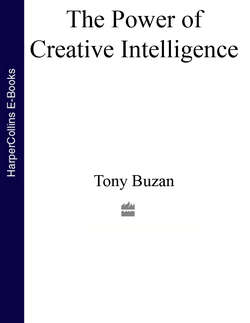Читать книгу The Power of Creative Intelligence: 10 ways to tap into your creative genius - Тони Бьюзен, Tony Buzan - Страница 12
Case History – Albert Einstein
ОглавлениеAlbert Einstein was nominated as the greatest creative genius of the 20th century. However, he was a poor student, preferring daydreaming to studying, and was eventually expelled from school for being a ‘disruptive influence’.
As a teenager he became inspired by the imaginative side of mathematics and physics, and was equally interested by the work of Michelangelo, whom he studied in depth. These mutual interests encouraged him to play even further with his imagination, and he developed his now-famous ‘Creative Mind Games’ in which he posed himself an intriguing question, and then allowed his imagination to run riot.
In one of his most famous Creative Mind Games, Einstein imagined that he was on the surface of the sun, grabbing a sunbeam, and travelling directly away from the sun at the speed of light, to the very ends of the universe.
When he came to the ‘end’ of his journey, he noticed to his astonishment that he was roughly back where he had started. This was logically impossible: you don’t go in a straight line forever and end up where you started!
Einstein therefore took another imaginary sunbeam ride from another part of the sun’s surface, and again went on a straight-line journey to the end of the universe. Once again he ended up relatively near where he had started.
Slowly the truth dawned on him: his imagination had told him more truths than his logic. If you travel in straight lines ‘forever’ and continually return to the vicinity of where you started, then ‘forever’ must be at least two things: curved in some way, and possessing a boundary.
This was how Einstein came to one of his most profound insights: our universe is a curved and finite universe. He did not come to this giant creative realization by left-brain thinking alone, but by combining his knowledge of number, word, order, logic and analysis with his massive imagination, spatial awareness and ability to see the whole picture.
His insight was a perfect blending and conversation between both sides of his brain. It was a perfect ‘whole-brained’ creative realization.
The same turned out to be true, in reverse, for the ‘right-brained’ creative geniuses. Let us take, for example, the ‘ultimate’ right-brainer, Ludwig van Beethoven.
